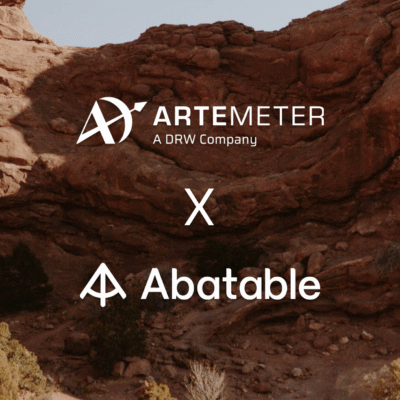We outline the importance of biodiversity for businesses and set out how companies can move from understanding risks, to setting targets, to taking action.
We at Abatable spend a lot of time focused on climate change, but it is by no means the sole thing we think about when it comes to environmental sustainability. Indeed, the natural world is inherently entwined in all our work.
Biodiversity as a topic has been gaining prominence in political, financial and corporate circles as awareness builds of the risks biodiversity loss poses to the global economy. Over half of global GDP is either moderately or highly dependent on nature, and industries including pharmaceuticals, agriculture and tourism rely strongly on biodiverse, functioning ecosystems.
On the other side of the coin, it is impossible to tackle climate change without protecting nature.
Tragically, unsustainable human activity means our ecosystems are in decline. WWF has starkly outlined how species populations have shrunk by 69% since 1970. It has been estimated that around $700bn needs to be mobilised to halt this degradation, highlighting a massive funding shortfall but also an opportunity.
Thankfully, businesses now have the tools to set targets to reduce their impact on biodiversity through the Science Based Targets Network (SBTN) – the latest of a series of initiatives launched to address the biodiversity crisis.
What is the SBTN and, more importantly, what should companies do to actually take action on biodiversity? We break it down here.
What is the SBTN?
Think of the Science Based Targets initiative (SBTi) for climate change, but focused on nature. SBTN is a framework for companies to measure and then set science-based targets to reduce their impact on nature that are measurable, actionable and time-bound.
The collective, comprising experts from 80 NGOs, consultancies and business associations, envisions “a global economy in which companies and cities operate within environmental boundaries on a socially equitable basis through the setting of science-based targets to transform their impact”.
Its mission is to embed the adoption of science-based targets within capital markets, building on the progress of establishing science-based targets for climate. The initiative shares many of the founding organisations of SBTi, and SBTi acts as its external climate hub. Organisations setting an SBTN target are expected to set an SBTi target as part of it.
How will the SBTN work?
SBTN is being trialled on 17 companies, and will initially cover how to set freshwater and land targets. In due course these will be accompanied by additional guidance on setting biodiversity and ocean targets. The first target validation for firms outside of the pilot will begin in early 2024.
Companies working under the initiative are expected to:
- assess their biodiversity impacts;
- prioritise action;
- measure baseline data;
- act to reduce current impacts and avoid future impacts; and
- track and report on progress.
This is arguably a more complex undertaking than setting a science-based target for greenhouse gases – biodiversity targets are based on multiple indicators that are location-specific, and there is no single global target (like 1.5C) on which to base the end goal.

Targets will be validated before company biodiversity claims can be made, which will need to follow claims guidance released by SBTN.
Specific guidance for the financial services sector, which will play a key role in transitioning financial flows to biodiversity-friendly activities, will follow in time.
Greater detail on how SBTN will work is available here.
Update 21.10.24: The SBTN’s Pilot Summary Report is available here.
How does SBTN relate to other biodiversity initiatives?
SBTN builds on the well-publicised Taskforce on Nature-related Financial Disclosures (TNFD) framework. Similar to SBTN borrowing from SBTi, TNFD takes cues from the better-known Taskforce on Climate-related Financial Disclosures (TCFD). TCFD is designed to help organisations measure and disclose their climate change risk.
TNFD was brought to life in July 2020 by a working group of 49 financial institutions and businesses, eight governments and 18 consortiums. It was formally launched in June 2021. Its aim is to deliver a risk management and disclosure framework for organisations to report (and ultimately act) on nature-related risks and opportunities. This is with the aim of allowing finance organisations to support nature-positive outcomes.
The final version of TNFD’s framework was published in September 2023.

TNFD’s beta disclosure framework is based on the same four pillars as TCFD:
- Governance – disclose board oversight and management’s role in assessing and managing nature-related dependencies, impacts, risks and opportunities;
- Strategy – disclose effects of nature-related dependencies, impacts, risks and opportunities on business strategy, financial planning and resilience;
- Risk and impact management – disclose the process for managing risks and opportunities and how stakeholders are engaged; and
- Metrics and targets – disclose metrics, targets and goals to manage all of the above.
SBTN has adopted TNFD’s definitions of impacts and dependencies on nature. The two initiatives will work together to facilitate overlap, though there may be some differences.
SBTN says it has designed the initiative to not be an additional reporting burden and to complement TNFD, as well as other disclosure initiatives such as TCFD, CDP, the Global Reporting Initiative (GRI) and the Sustainability Accounting Standards Board (SASB).
TNFD and SBTN are currently entirely voluntary, though some jurisdictions such as the EU are looking to implement mandatory reporting requirements on climate, nature and social issues. It is also worth pointing out that TCFD began life as a voluntary initiative, but it is now mandatory in an increasing number of jurisdictions.
What’s the picture internationally?
On a larger scale, this business biodiversity engagement landscape is playing out against the background of a Paris Agreement equivalent for nature – the Kunming-Montreal Global Biodiversity Framework (GBF).
After repeated Covid-19-related delays, the framework – which is not legally binding – was agreed by 196 parties at COP15 in December 2022. It comprises a set of four overarching goals and 23 action-oriented targets, including one dubbed 30×30 – to conserve 30% of the world’s lands, seas and inland waters by 2030. Only around 17% of land and 10% of marine areas are currently under protection.
The GBF aims to mobilise at least $200bn of biodiversity-related public and private funding a year. Company and finance sector disclosure and target setting through initiatives such as TNFD and SBTN will play a key role here to change finance flows, and the framework says firms should disclose their risks and impacts on biodiversity by 2030.
So now there’s a framework for targets, but what’s next?
The hope is that by auditing and measuring, firms will have more of an understanding of their material biodiversity impacts and where to focus action. This is not dissimilar to the mitigation hierarchy in the voluntary carbon market, in which firms are encouraged to track and report as a first step.
More detail on how to act on targets will follow when the SBTN publishes its ‘Step 4: Act’ guidance in 2024. Before this though, there are some areas to focus on:
Direct company initiatives
SBTN outlines some high-level direct action points for companies to avoid and reduce harmful resource use, then restore and regenerate habitats.
This can be done through insetting, and one solution is regenerative agriculture which, for example, Guinness has invested in at the barley farms it sources from. Directly improving biodiversity at company locations, addressing sourcing in supply chains and then investing in nature is another. Pharmaceutical giant GSK is adopting this approach with a target of having a positive impact on biodiversity at all of its sites by 2030, while AB InBev is active in supporting ecosystem conservation and restoration projects as we heard in our podcast.
Initiatives like these will require careful consideration and sensible collaborative action implemented across business value chains, though it should be noted that the downstream parts of the value chain are not covered in the first SBTN release.
Biodiversity credits
The nascent biodiversity market is gaining traction, and could be another option for businesses looking to act. Biodiversity credits, which are prominent in markets including Australia, New Zealand and Columbia, are similar to carbon credits but instead of directing financing to projects that conserve carbon stocks, it is directed to projects that enrich biodiversity. These tradable instruments are designed to finance the conservation and restoration of nature.
Biodiversity credits can be used to protect habitats in areas where nature-based carbon credits cannot necessarily be accessed, for example in relation to small projects, and they differ in that their value is not necessarily proportionate to the area of land under consideration. For example, a small, biodiversity-rich habitat containing rare species could be just as ‘valuable’ as a larger area that is more ecologically homogenous.
It is important biodiversity credits are based on robust and reliable data, disclosure and dialogue to ensure a high-integrity market. Pioneering initiatives such as Plan Vivo’s PV Nature biodiversity standard can help ensure this.
Some question whether a monetary figure should be placed on nature at all. Does the natural world not have infinite value? The Biodiversity Credit Alliance says that voluntary biodiversity credits are not an attempt to commodify nature but instead put a price on the human labour and technology cost to cause biodiversity conservation and enhancement.
Biodiversity credits differ from biodiversity offset credits, which are somewhat analogous to emissions allowances in carbon compliance markets and are used to offset residual biodiversity impacts of a given project.
In the UK, the Environment Act’s biodiversity net gain regulation makes it mandatory for developers to avoid habitat loss or to buy “biodiversity units” from land managers to compensate for it. As a final resort, credits can be bought from the government which will be used to invest in habitat creation elsewhere. These units, which are based on habitat size and quality, are expected to trade in the tens of thousands of pounds.
The SBTN does not see a role for biodiversity offsets in a science-based biodiversity plan, but is reportedly more ambivalent on biodiversity credits. The Kunming-Montreal Global Biodiversity Framework does see a role for “innovative schemes” such as biodiversity credits, along with blended finance, green bonds and payments for ecosystem services.
Carbon credits with strong biodiversity co-benefits
While biodiversity credits will no doubt play a role, the market is currently not yet mature, and so another option is to look to purchase high-quality carbon credits with strong biodiversity co-benefits. Indeed, investing in Nature-based Solutions (NBS) can deliver key benefits for nature, people and climate and so is an option for companies looking to deliver on a number of goals.
There are some fantastic projects, for example Conservation Coast which Abatable has exclusive access to and which conserves threatened cloud forests along the Caribbean coastline of Guatemala.
The REDD+ project has avoided the emissions of 5.3mn tonnes of CO2 through improved management of 55,0000 hectares of forest. On top of its carbon impact, from a biodiversity perspective it:
- protects 30 threatened species including the Jaguar and West Indian Manatee;
- provides habitat protection for 504 species of birds; and
- over 120 species of migratory birds use the forests as their main wintering or transiting habitat.
It’s important when looking for such projects to carry out effective due diligence and look for clear information on, for example, the number of watersheds or species covered. High-quality projects should be able to provide this biodiversity information.
Looking for the impact characteristics of projects can be difficult, and so we believe independent and user-friendly scoring systems can play an important role to help mitigate risk and also get a handle on project impact and ESG characteristics. It is important if improved biodiversity is a requirement to be able to have full visibility into qualitative sub-criteria scores to understand specific project nuances. The quality and reputation of the carbon project developer can also have a large bearing on the credit and its real co-benefits.
At Abatable we have outlined some more thoughts on this and on how to ensure high quality in carbon markets more broadly, and we have also produced a quality framework white paper detailing our methodology.
Our sourcing platform allows users to easily discover carbon projects that match their desired impact characteristics. Given the biodiversity challenge, protecting nature by halting environmental degradation is a laudable impact to prioritise.














































































































